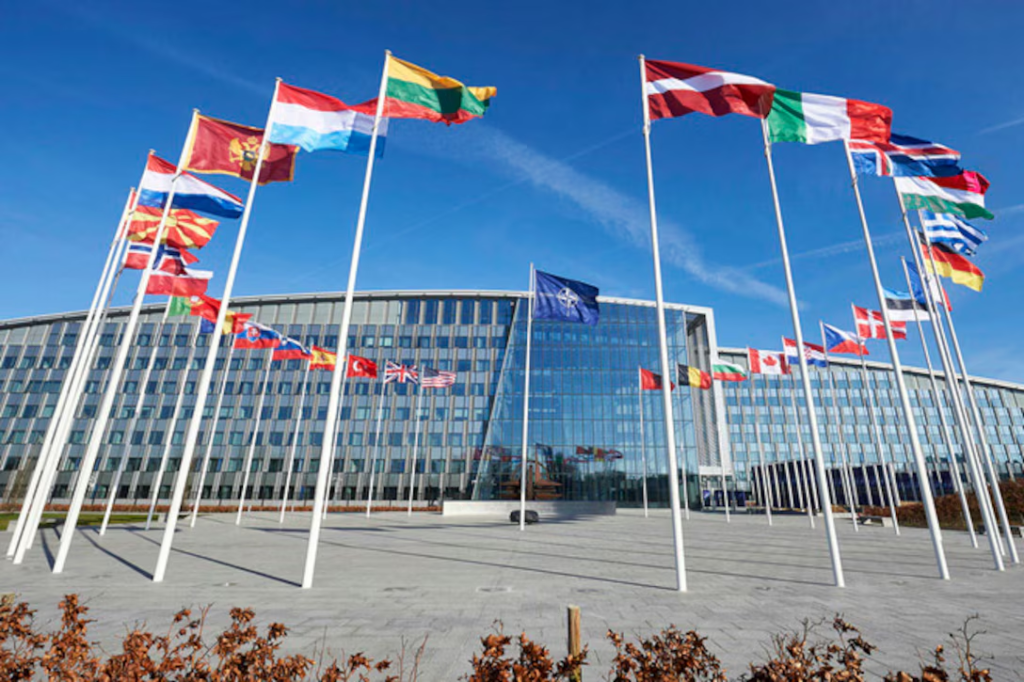

“NATO: Evolution and Impact of the North Atlantic Alliance”
Introduction
The North Atlantic Treaty Organization (NATO) is a military and political alliance established in the aftermath of World War II to ensure collective defense and promote peace and stability in the North Atlantic region. With its core principle of collective defense under Article 5 of the NATO Treaty, the organization has played a significant role in global security dynamics for over seven decades.
Origins and Formation
NATO was founded on April 4, 1949, through the signing of the North Atlantic Treaty (also known as the Washington Treaty). Its founding members included the United States, Canada, and ten European nations: Belgium, Denmark, France, Iceland, Italy, Luxembourg, the Netherlands, Norway, Portugal, and the United Kingdom. The alliance was created to counter the growing influence of the Soviet Union and to prevent the resurgence of aggressive nationalism in Europe.
Also Read; Why Donald Trump Imposes Tariffs: A Look at the ‘America
Core Principles and Objectives
NATO’s primary objectives are collective defense, crisis management, and cooperative security. These goals are supported by several key principles:
- Collective Defense (Article 5): The cornerstone of NATO, Article 5 states that an armed attack against one member is considered an attack against all members. This principle has only been invoked once, following the terrorist attacks on the United States on September 11, 2001.
- Democratic Values: NATO promotes democratic governance, the rule of law, and individual liberty among its members.
- Consensus Decision-Making: Decisions within NATO are made by consensus, ensuring that all member states have an equal say in the organization’s policies and actions.
Expansion and Membership
Since its formation, NATO has expanded significantly, with 31 member countries as of 2025. New members have joined in multiple waves of enlargement, often driven by the desire for security and closer integration with Western democratic institutions. Notable expansions include:
- 1952: Greece and Turkey joined NATO.
- 1982: Spain became a member.
- 1999: The Czech Republic, Hungary, and Poland were admitted.
- 2004: Seven countries, including Bulgaria, Estonia, Latvia, Lithuania, Romania, Slovakia, and Slovenia, joined NATO.
- 2009: Albania and Croatia became members.
- 2017: Montenegro joined the alliance.
- 2020: North Macedonia became the 30th member.
- 2023: Finland joined as the 31st member.
Sweden has also applied for membership and is in the process of completing the necessary procedures.
NATO’s Military Structure
NATO’s military structure is designed to facilitate the coordination of collective defense efforts. The two main commands are:
- Allied Command Operations (ACO): Responsible for the planning and execution of NATO’s military operations.
- Allied Command Transformation (ACT): Focuses on innovation, training, and the development of new capabilities to ensure NATO’s future readiness.
The Supreme Allied Commander Europe (SACEUR) leads ACO, while ACT is headed by the Supreme Allied Commander Transformation (SACT).
Key Operations and Missions
NATO has undertaken a wide range of military and humanitarian missions over the years, including:
- Balkans: NATO intervened in the conflicts in Bosnia and Kosovo during the 1990s to stop ethnic cleansing and promote peace.
- Afghanistan: Following the 9/11 attacks, NATO led the International Security Assistance Force (ISAF) to combat terrorism and support nation-building efforts.
- Libya: In 2011, NATO enforced a no-fly zone to protect civilians during the Libyan Civil War.
- Counter-Piracy: NATO has conducted anti-piracy missions off the coast of Somalia to ensure the safety of international shipping.
Modern Challenges and Adaptation
NATO faces several modern challenges, including:
- Russia’s Aggression: The annexation of Crimea in 2014 and ongoing conflicts in Ukraine have heightened tensions with Russia, prompting NATO to bolster its eastern defenses.
- Cybersecurity: With the rise of cyber threats, NATO has recognized cyberspace as a domain of warfare and is working to strengthen its cyber defense capabilities.
- Hybrid Warfare: NATO is adapting to hybrid threats that combine conventional military actions with disinformation, economic pressure, and cyberattacks.
- China’s Global Influence: Although NATO remains primarily focused on the North Atlantic region, the alliance has acknowledged the growing influence of China and its potential impact on global security.
Also Read; शून्य निवेश; बिजनेस आइडिया और निष्पादन रणनीति रणनीति
Partnerships and Cooperation
NATO collaborates with numerous non-member countries and international organizations to enhance global security. The Partnership for Peace (PfP) program fosters cooperation with countries in Europe, Central Asia, and the Caucasus. NATO also works closely with the European Union, the United Nations, and other regional organizations.
Future Prospects
As NATO looks to the future, its priorities include maintaining unity among its members, modernizing its military capabilities, and addressing emerging security challenges. The alliance is also focused on deepening its partnerships and promoting stability beyond its borders.
Conclusion
NATO has evolved significantly since its founding, adapting to changing global security dynamics while remaining committed to its core principles of collective defense and democratic values. As it navigates new challenges and opportunities, NATO will continue to play a vital role in ensuring peace and stability in the North Atlantic region and beyond.



